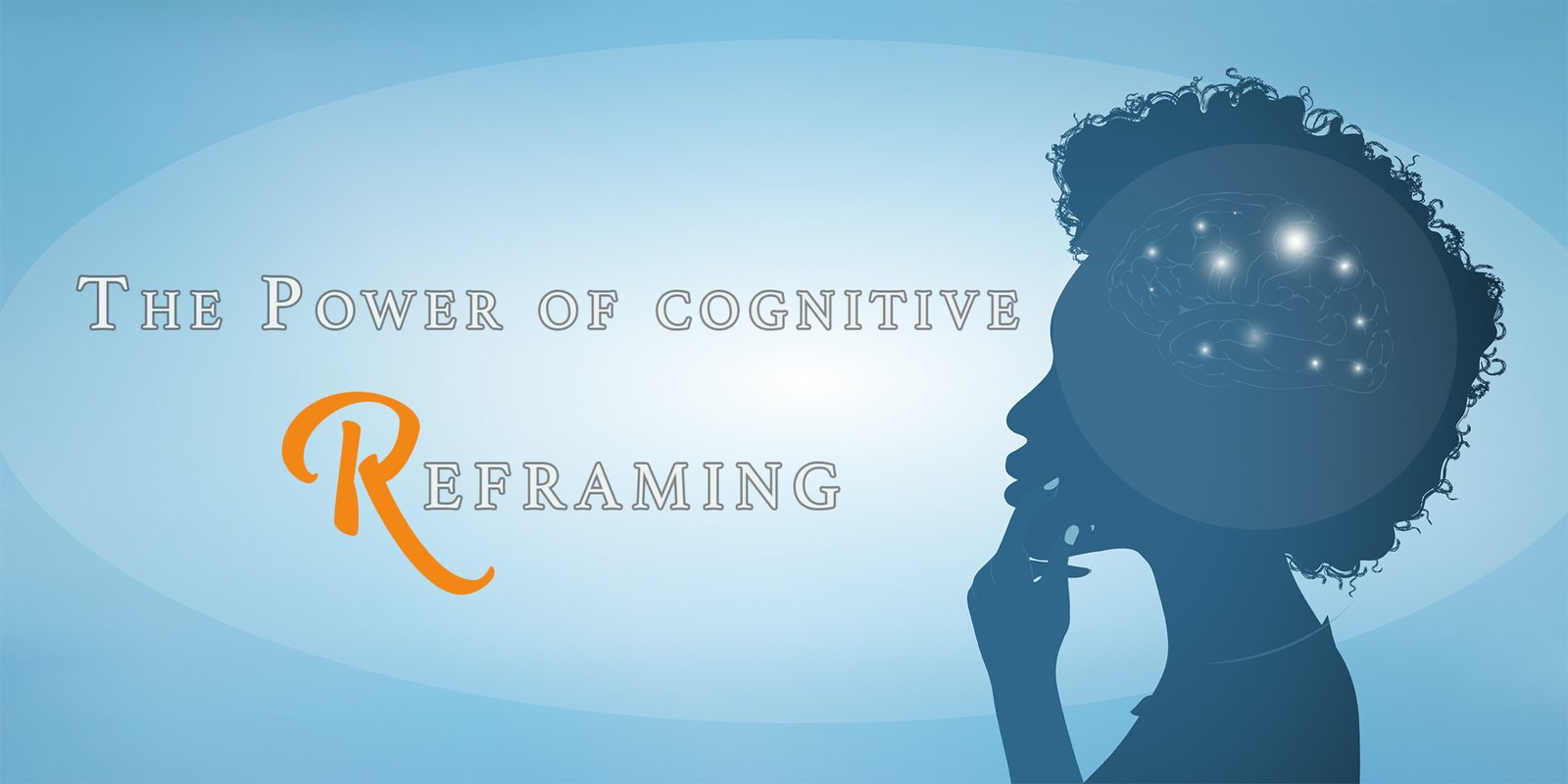- An Introduction To The Power Of Patience Series
- How To Harness Patience & Find Your True Potential
- Triggers, How to Identify And Prevent Them
- How To Use Cognitive Reframing To Enhance Patience
- Patience Through Gratitude, Achieve It Now
Introduction To Cognitive Reframing
In our fast-paced, instant-gratification world, patience seems to be a virtue on the brink of extinction. The relentless pursuit of quick results and immediate rewards has become the norm, leaving little room for cultivating patience. However, patience is not merely a passive quality, but a potent tool for personal growth and resilience. When coupled with cognitive reframing, a psychological technique that helps to change our perspective on challenging situations, patience becomes a force that can transform our lives in profound ways.
This is the 4th installment in our Power of Patience Series. If you haven’t read the past installments, follow the link above to read them now.
The Essence of Patience
Patience is often misunderstood as inaction or passivity or an unwillingness to act. Contrary to this misconception, patience is an active and conscious choice to wait, to endure, or to persevere without agitation or frustration. It involves the ability to maintain composure and focus when faced with obstacles, delays, or adversity. Patience is not about standing still, but about maintaining equanimity when choosing to go forward.
Shifting Perspective
In the labyrinth of human consciousness, our thoughts are the architects of our reality. The way we interpret and perceive events shapes our emotions, behaviors, and, ultimately, our lives. Cognitive reframing is a psychological tool that empowers individuals to reconstruct their mental landscapes, turning negative or unhelpful thoughts into constructive ones. This process enhances emotional well-being and opens doors to better problem-solving, improved relationships, and increased resilience.
Cognitive reframing, a technique derived from cognitive-behavioral therapy (CBT), involves changing how we interpret and think about situations. It is a mental exercise that allows us to reframe an adverse or challenging situation into a more helpful circumstance. By doing so, we can alter our emotional responses and behavior.
Understanding Cognitive Reframing
Cognitive reframing, often associated with cognitive-behavioral therapy (CBT), is a cognitive restructuring technique. It involves identifying and challenging irrational or distorted thoughts and replacing them with more balanced, rational, or constructive alternatives. This reframing process allows individuals to see situations from different angles and change their emotional responses accordingly.
The Mechanisms of Reframing
1. Identifying Negative Thought Patterns
The first step in cognitive reframing is to recognize negative or unhelpful thought patterns. These can include cognitive distortions such as catastrophizing (assuming the worst), black-and-white thinking (seeing things in extremes), or personalization (blaming oneself for external events).
2. Challenging Irrational Beliefs
Once negative thought patterns are identified, individuals examine their validity and accuracy. They question whether their thoughts are based on evidence or are rooted in cognitive distortions. This questioning allows individuals to challenge irrational beliefs and assumptions.
3. Generating Alternative Perspectives
In this step, individuals actively seek alternative ways to interpret a situation. They consider different viewpoints and reframe their thoughts to be more balanced and realistic. This may involve finding evidence contradicting the negative belief or adopting a more compassionate and understanding view.
4. Adopting New Beliefs
Finally, individuals adopt the newly framed thoughts and beliefs. They consciously practice thinking in this new way, reinforcing the positive perspective until it becomes a habit.
The Transformative Power of Reframing
1. Emotional Regulation
Cognitive reframing is a potent tool for emotional regulation. By changing the way we interpret situations, we can alter our emotional responses. For example, reframing a perceived failure as a learning opportunity can transform feelings of frustration into motivation.
2. Stress Reduction
Stress often arises from negative thought patterns and catastrophic thinking. Cognitive reframing can mitigate stress by replacing these patterns with more rational and positive alternatives.
3. Improved Problem-Solving
When faced with challenges, individuals who practice cognitive reframing are better equipped to find solutions. They are less likely to become overwhelmed by negative thoughts and are more focused on productive problem-solving.
4. Enhanced Relationships
Reframing can also benefit relationships. By interpreting others’ actions more empathetically and considering alternative perspectives. With this process, individuals can improve communication and reduce conflicts.
5. Greater Resilience
Cognitive reframing fosters resilience by encouraging individuals to view setbacks as opportunities for growth. This resilience is a crucial asset in navigating life’s inevitable ups-and-downs.
The Power of Alternate Thinking
1. Reduced Stress
Cognitive reframing helps us view stressful situations as challenges we can overcome. The opposite being to see problems as insurmountable. This shift in perspective reduces the physiological and psychological impact of stress.
2. Enhanced Problem-Solving
When we reframe a situation, we open ourselves to new perspectives and solutions. This can lead to more effective problem-solving and creative thinking.
3. Improved Emotional Well-being
Reframing allows us to break free from negative thought patterns that contribute to anxiety and depression. By replacing these thoughts with more positive and realistic ones, we can improve our emotional well-being.
4. Increased Resilience
Cognitive reframing fosters resilience by helping us adapt to adversity. It enables us to see setbacks as opportunities for growth and learning.
5. Better Relationships
Reframing can also improve relationships by reducing misunderstandings and conflicts. When we reframe our interpretations of others’ actions, we are more likely to respond with empathy and understanding.
Challenges in Cognitive reframing
Cognitive reframing is a valuable psychological technique, but it has challenges and limitations. Here are some of the key challenges associated with cognitive reframing:
1. Resistance to Change
One of the primary challenges in cognitive reframing is that individuals may resist changing their existing thought patterns. This resistance can stem from a variety of factors, including a fear of the unknown, a reluctance to confront uncomfortable emotions, or a strong attachment to long-held beliefs. Overcoming this resistance can be a significant hurdle to the reframing process.
2. Lack of Awareness
Many people are unaware of their negative thought patterns or cognitive distortions. They may not recognize that their thoughts are irrational or unhelpful, making it difficult to start the reframing process. Developing self-awareness and the ability to identify these thought patterns is an essential first step in cognitive reframing.
3. Emotional Intensity
With powerful emotions, such as anger, anxiety, or sadness, it’s challenging to engage in cognitive reframing. Emotions can be overwhelming and may cloud a person’s ability to reason or consider alternative perspectives. In such cases, it may be necessary to first address the emotional intensity before attempting reframing.
4. Time and Practice
Cognitive reframing is a skill that requires practice and repetition. Changing ingrained thought patterns takes time, and individuals may become frustrated if they do not see immediate results. Consistency and patience are necessary for the reframing process to be effective.
5. Complex Situations
Some situations or experiences may be extremely complex or traumatic, making cognitive reframing more challenging. In cases of severe trauma or ongoing adversity, reframing may need to be complemented with other therapeutic approaches, such as trauma-focused therapy or counseling.
6. Cognitive Distortions
Cognitive reframing aims to address cognitive distortions or irrational thinking patterns. However, identifying and challenging these distortions can be difficult, as they often occur automatically and unconsciously. Common cognitive distortions include all-or-nothing thinking, overgeneralization, and personalization.
7. Consistency
To experience lasting benefits from cognitive reframing, individuals must be consistent in their efforts. It is not enough to reframe thoughts sporadically; it requires ongoing practice to create lasting changes in thought patterns.
8. Contextual Limitations
Cognitive reframing may not always be appropriate or effective in specific contexts. For example, in situations requiring immediate action or when facing severe crises, reframing thoughts may not be the most practical or helpful approach.
9. Individual Differences
What works for one person in terms of cognitive reframing may not work as effectively for another. Each individual’s thought patterns and mental processes are unique, and the most effective techniques can vary from person to person.
10. Professional Guidance
While cognitive reframing can be a valuable self-help tool, some individuals may require the guidance of a trained therapist or counselor to address deep-seated cognitive distortions or emotional challenges effectively.
The Synergy of Patience and Cognitive Reframing
While patience and cognitive reframing are mighty on their own, their combination is transformative. When faced with a challenging situation, practicing patience allows us to avoid impulsive reactions. It gives us the time and mental space to employ cognitive reframing, which can help us see the situation in a more positive light.
Consider a person stuck in a traffic jam. Impatience may lead to frustration, anger, and aggressive behavior. However, suppose they exercise patience and choose to view the situation through cognitive reframing. Here, they might see the traffic jam as an opportunity to listen to an interesting podcast or enjoy a moment of solitude. This reduces stress and turns a negative experience into a positive one.
External Triggers
1. External factors relates to the environment, such as noise, clutter, or crowded spaces. These types can impact our mood and emotions.
2. Time Constraints such as pressure to meet deadlines, can induce stress and impatience.
3. Other People’s behaviors such as their actions and words can act as an external factor. These often affect our emotions and responses.
4. Criticism or rejection from others can be emotionally triggering. It also affects our self-esteem and confidence.
5. Unforeseen events, such as a accident or sudden plan change, can cause emotional reactions.
When self-reflecting, it’s important to distinguish the internal from the external. Remember, external triggers relate to circumstances or events outside of your control. Further, internal triggers arise from thoughts, beliefs, and emotions. These could include feelings of inadequacy, fear of failure, or the need for instant gratification.
By identifying both the internal and external, you gain a comprehensive understanding of what induces impatience. This awareness sets the stage for implementing preventive measures.
Summary
In a world that often values speed and instant gratification, the power of patience and cognitive reframing cannot be overstated. Patience is the foundation of emotional resilience, effective decision-making, and lasting relationships. Cognitive reframing complements patience by providing the tools to shift our perspective on challenging situations, reducing stress and enhancing our well-being.
By consciously cultivating patience and practicing cognitive reframing, we empower ourselves to navigate life’s challenges with grace and wisdom. These two techniques, when combined, allow us to transform adversity into opportunity and foster a greater sense of inner peace and fulfillment in our fast-paced world. Ultimately, the power of patience and cognitive reframing lies not only in their individual capacities but in their ability to work in synergy, opening doors to personal growth and a more meaningful existence.













[…] […]